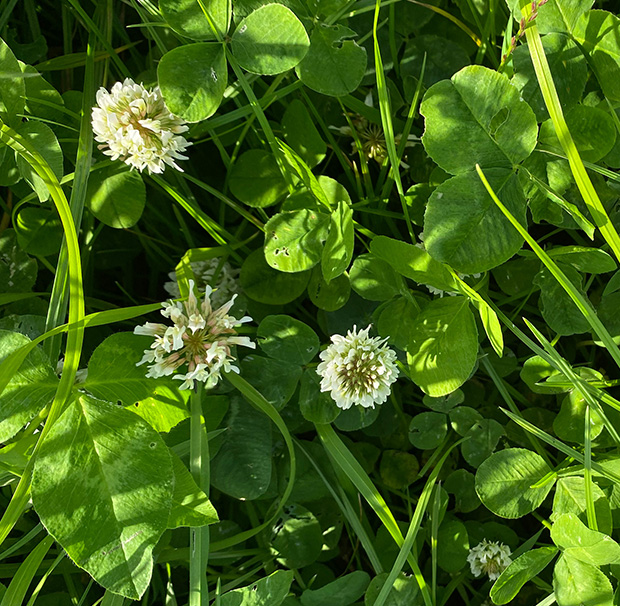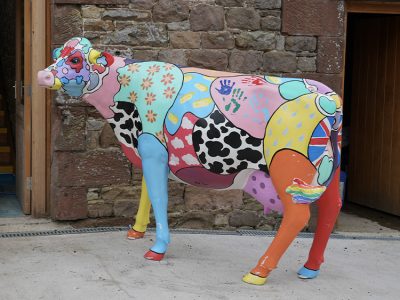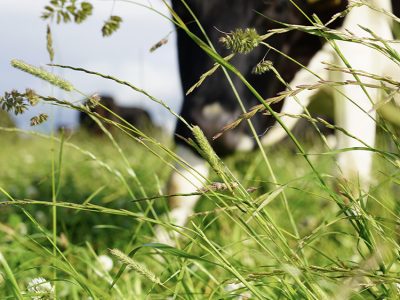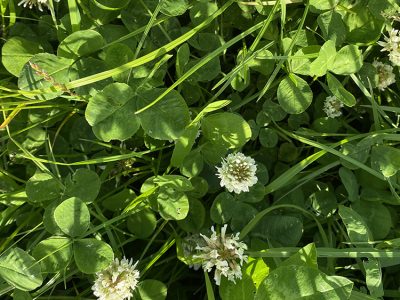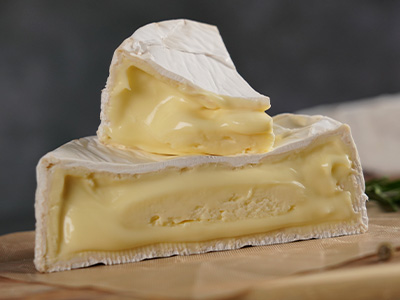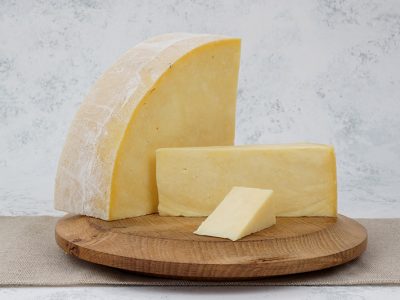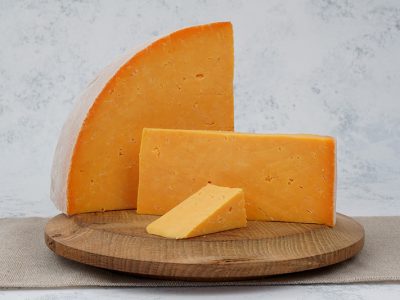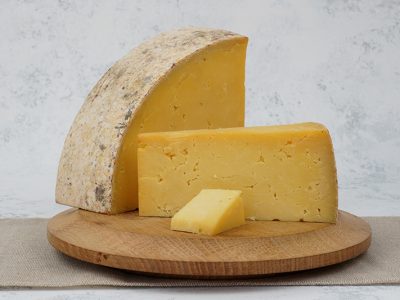A HAPPY HERD OF CUMBRIAN COWS
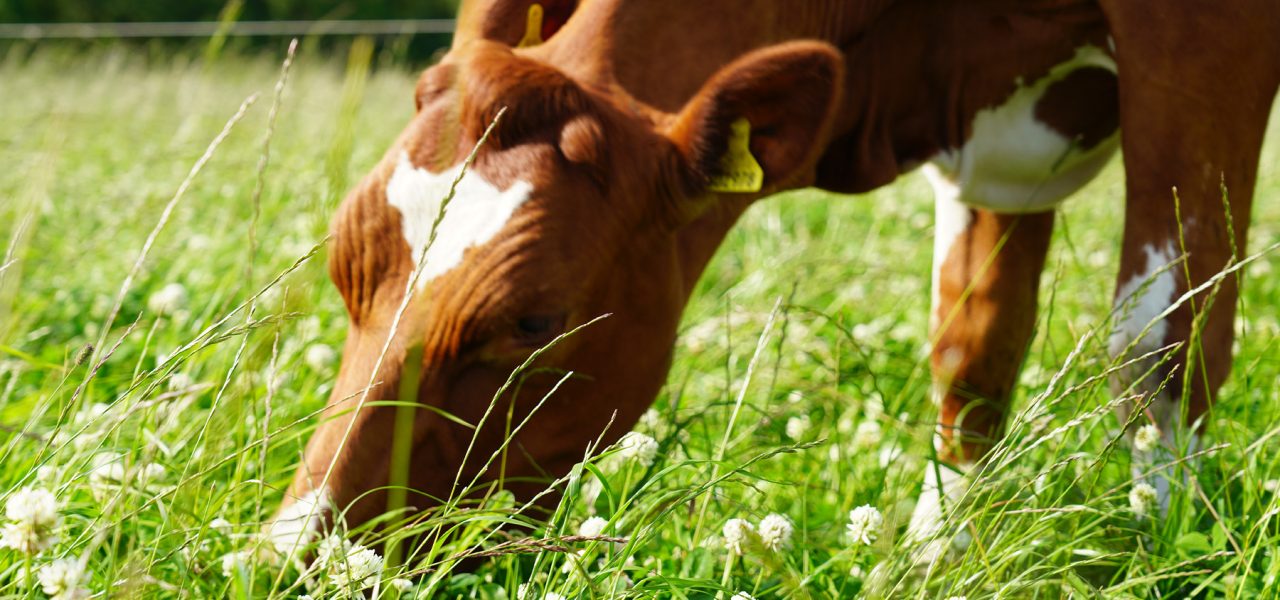
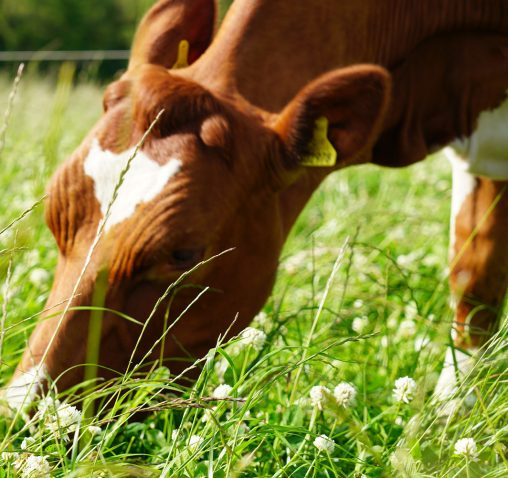
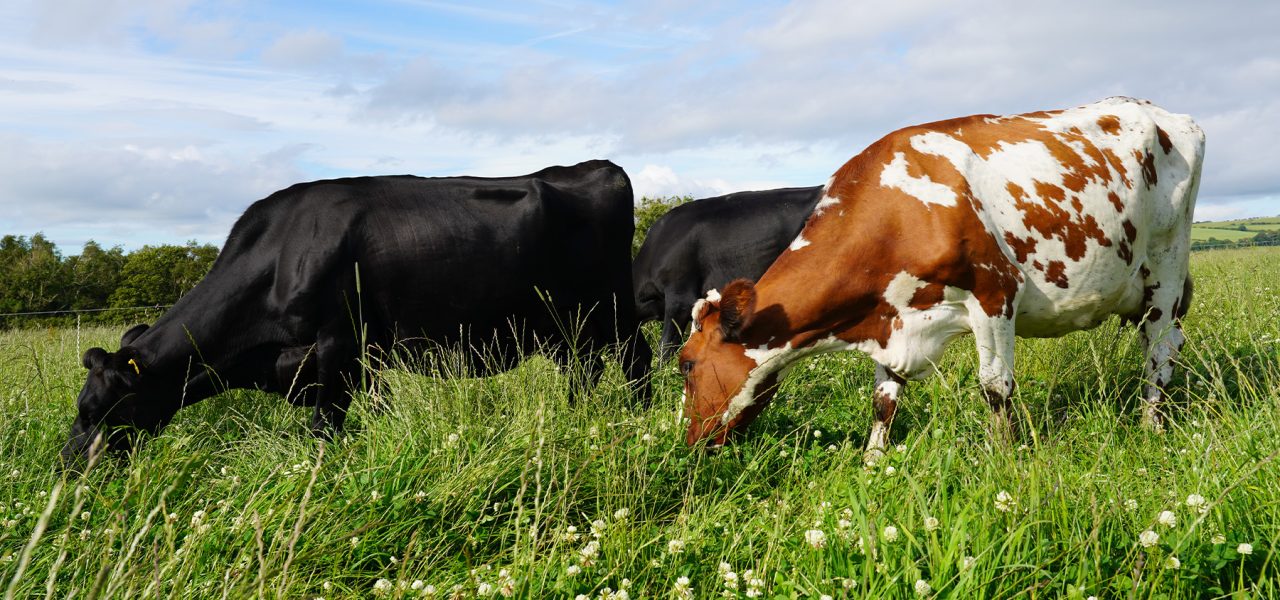
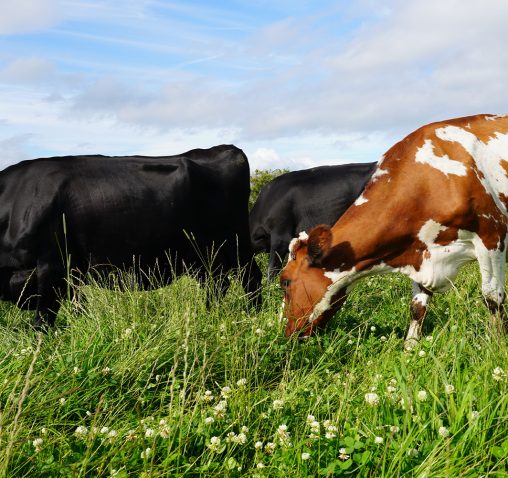
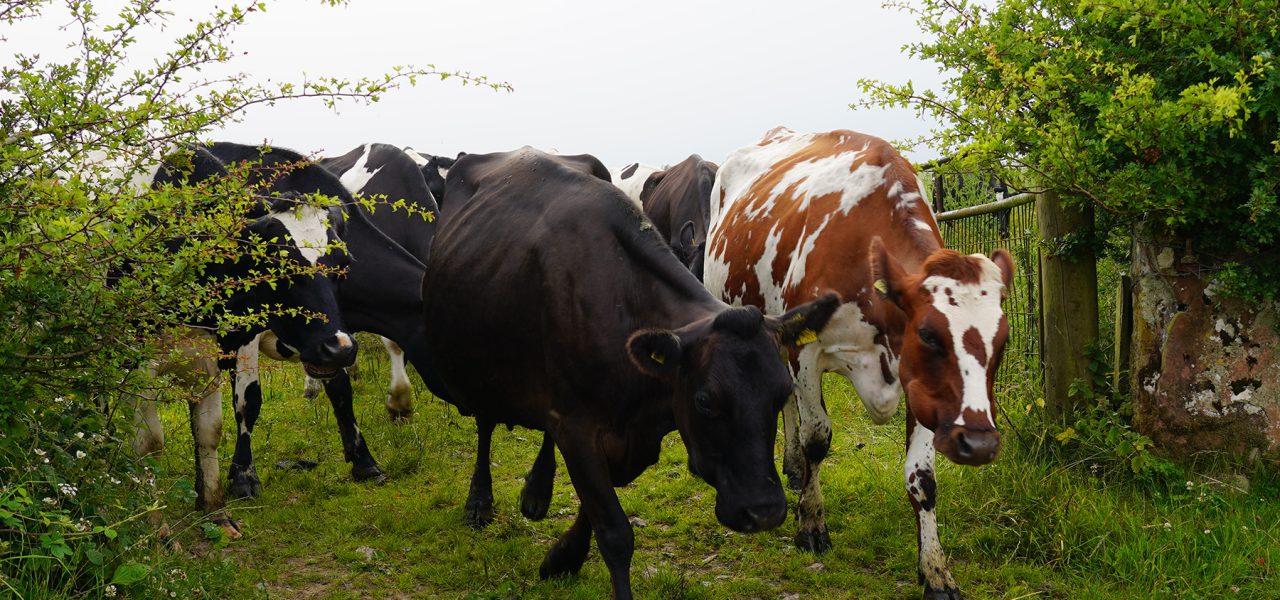
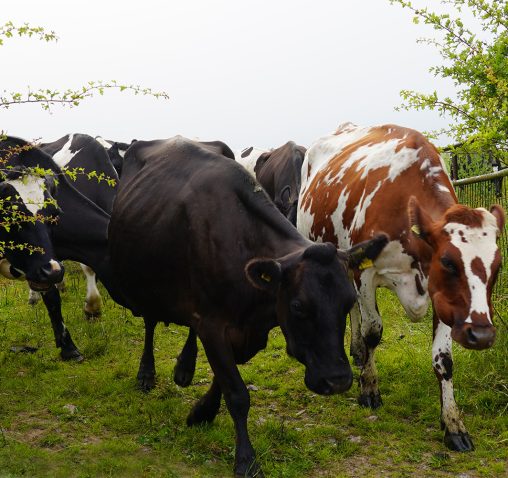
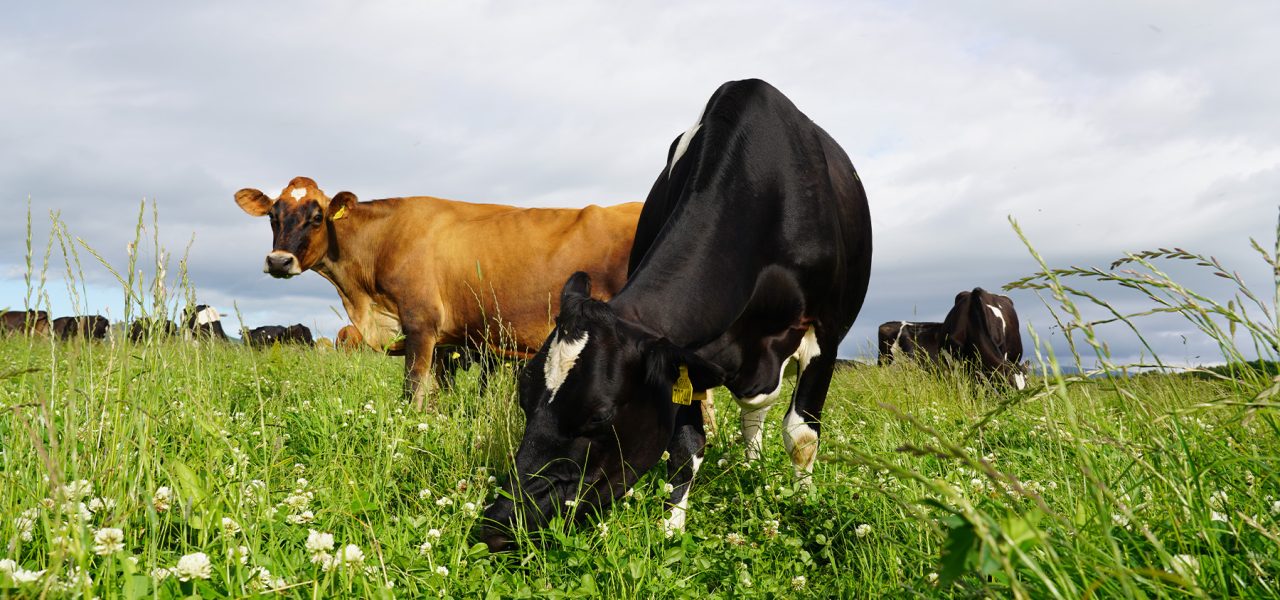
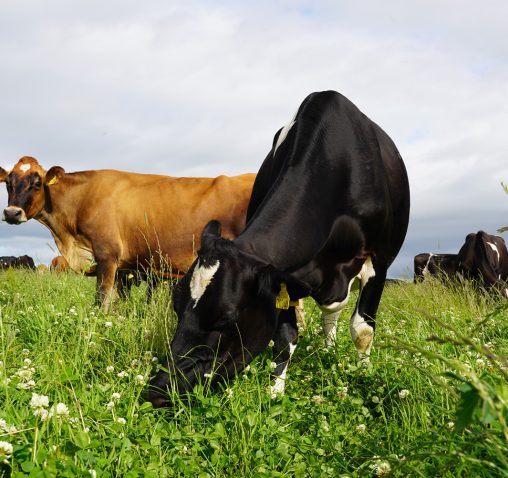
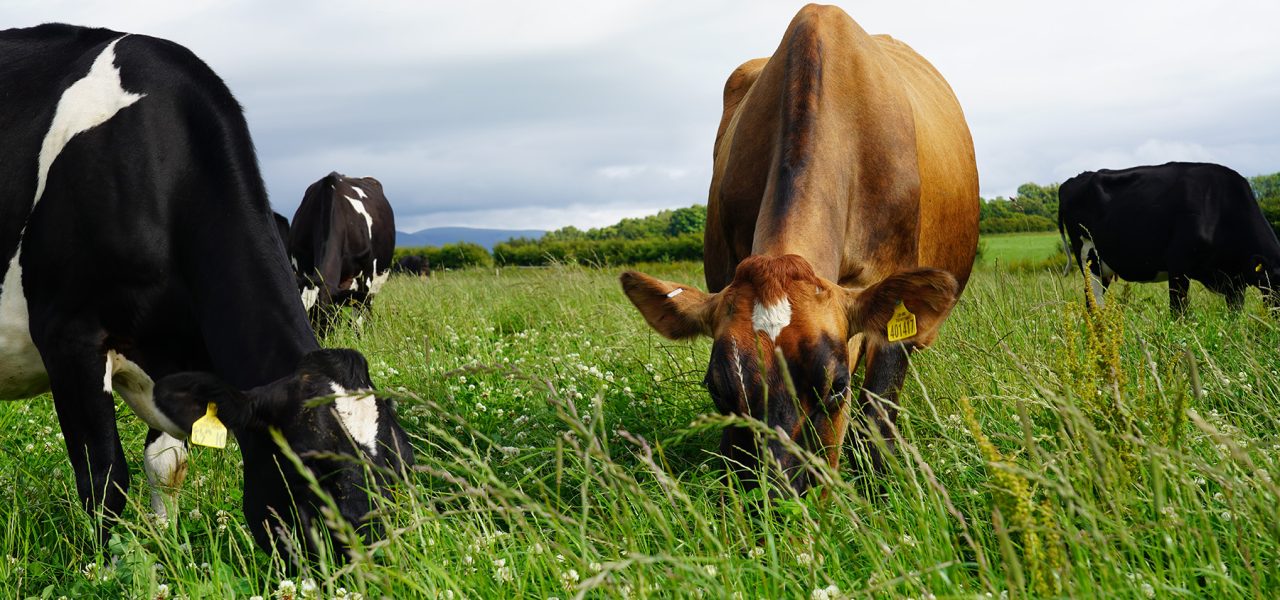
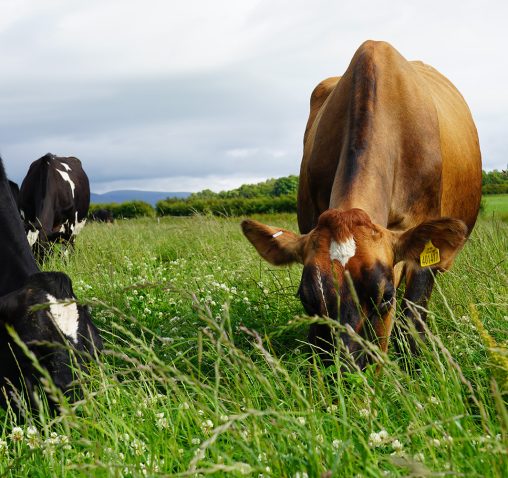
Our belief is that non-stressed grazing cows produce top quality creamy organic milk which, as you’d expect, is the foundation to top quality organic cheese.
Looking back to 2017 our herd was larger at around 400 head of cattle and comprised solely of Holstein Friesian cows, the dependable dairy breed synonymous for their impressive high milk production.
This was in the early days of planning our farmhouse dairy and it quickly transpired that making the quality of cheese and butter we wanted wasn’t going to be possible, due to there being less butterfat in the milk from the Holstein Friesians.
But too much butterfat isn’t necessarily a good thing; we knew that Jersey cows produced higher quality milk and in good quantities, so the solution we came to was a mixed Jersey-Friesian-Norwegian Red herd.
The intention was to be using more of the milk ourselves, so did we really need so many cows? Obviously not, so our herd going-forward was now going to stand at around 180, less than half the previous number.
Today our lovely single herd enjoy grazing outside for over 300 days a year and calve in early Spring as we aim to match their lactation curve with the grass growth curve.
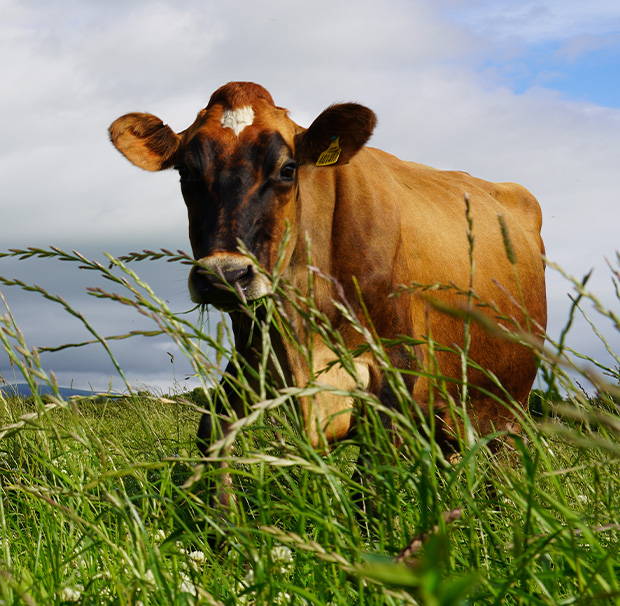
Everything our cows eat is grown here at Park House Farm, either directly from the pasture or harvested as straw or sileage for consumption during the winter months when they escape the worst of the Cumbrian weather under cover.
Here on the northern edge of the Lake District is a great part of the country for growing grass and native clovers, chicory, herbs and legumes, all of which impart a unique and changing flavour to the milk and cheese throughout the year.
By sowing deep-rooted plants in the grass sward of our pastures we can let nature capture nitrogen and fix it in the soil for the grasses to utilise. In addition, the grazing cattle naturally fertilise the paddock and, the more they graze, the quicker it grows.
Our ‘mob grazing’ farming technique allows us to use one paddock a day every 28-days in rotation which gives the plants and soil plenty of rest and growth before our herd graze again.
The grazing cattle naturally fertilise the paddock and, the more they graze, the quicker it grows. By also introducing a flock of free-range chickens to follow the cows through the pastures we can mimic the natural process of birds and large herbivores working in harmony to build soil.
